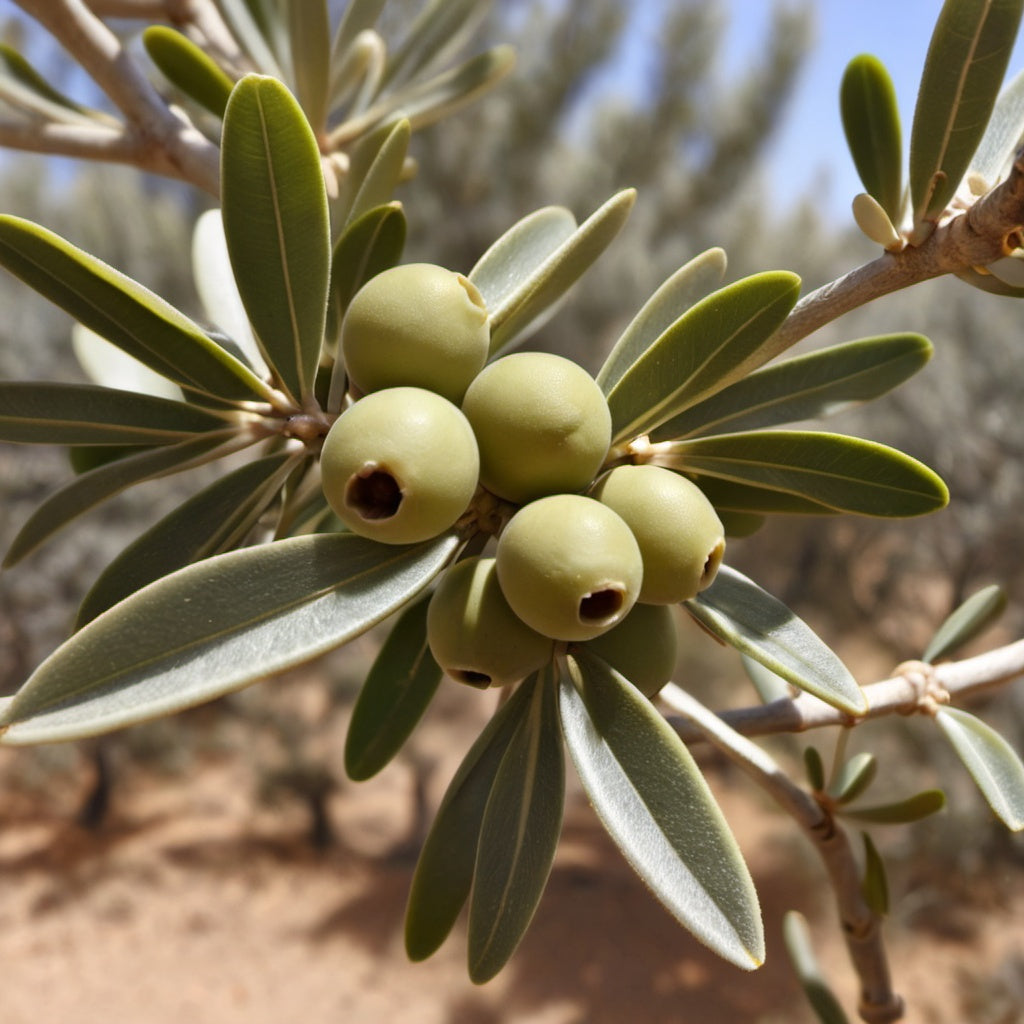Olive Tree Seeds
Olive Tree Seeds
Couldn't load pickup availability
Olive Tree Seeds
(Olea europaea)
Olea europaea, commonly known as the olive tree, is a species native to the Mediterranean Basin, though it is now cultivated in various temperate regions worldwide.
General Characteristics
- Appearance: Olive trees are evergreen and can grow to about 8-15 meters (26-49 feet) in height. They have twisted trunks and silvery-green leaves.
- Leaves: The leaves are lanceolate, about 4-10 cm long, and have a leathery texture.
- Flowers: Olive trees produce small, white or yellowish flowers that bloom in clusters. Flowering typically occurs in late spring to early summer.
Habitat and Cultivation
- Climate: Olive trees thrive in hot, dry summers and mild, wet winters. They prefer well-drained soils and are drought-resistant.
- Cultivation: The trees are primarily grown for their fruit (olives) and for olive oil production. They are cultivated in many countries, with Spain, Italy, and Greece being the largest producers.
Economic Importance
- Olives: Olives can be eaten whole or processed into oil, which is a staple in Mediterranean cuisine. They can also be used in various culinary dishes and products.
- Olive Oil: Olive oil is known for its health benefits, including high levels of monounsaturated fats and antioxidants. It is a key ingredient in cooking, dressings, and cosmetics.
Cultural Significance
- Symbolism: The olive tree holds cultural and historical significance, often symbolizing peace, prosperity, and wisdom. It is mentioned in various ancient texts and is significant in many religions.
Ecological Role
- Biodiversity: Olive groves can support a variety of wildlife and contribute to soil conservation and biodiversity.
Zones: 9 to 11
Germination Range: 50-70%
Stratification Requirement: We recommend a 4 day water soak followed by 120 days warm stratification followed by 120 days cold stratification.
Planting Instructions:
Seed Preparation:
Soak the seeds in water for 4 days to soften the hard outer shell, which will enhance germination. For better results, warm stratify the seeds by placing them in a plastic container with moist seed starting mix. Place the container on a heat seedling mat 24 hours a day for 120 days. After the warm stratification period is over, place the seeds and moist seed starting mix into a sealed ziplock bag. Place the bag in the bottom of your refrigerator for 120 days. This stratification period mimics the natural winter conditions that seeds need to break dormancy.
Planting the Seeds:
Once the seeds are prepared, choose a well-draining potting mix and fill small pots or seed trays. Plant the seeds about half an inch deep in the soil, covering them lightly. Water the soil gently to ensure it is moist but not soggy. Olive seeds require warmth and light to germinate, so place the pots in a warm location with indirect sunlight. A temperature range of 65-75°F (18-24°C) is ideal for germination, which can take anywhere from a few weeks to a couple of months.
Care and Transplanting:
As the seedlings emerge, provide them with plenty of light, either from a sunny window or by using grow lights. Keep the soil consistently moist but not overly wet. Once the seedlings develop a few sets of true leaves and are sturdy enough to handle, it’s time to transplant them into larger pots. Choose containers with good drainage and continue to care for them until they are about 6-12 inches tall. At this stage, you can gradually acclimate them to outdoor conditions before planting them in the garden or landscape.
Long-Term Care:
After transplanting to their final location, olive trees require well-draining soil and full sun to thrive. Water young trees regularly during dry spells, but be careful not to overwater, as olive trees are drought-tolerant once established. Fertilize sparingly with a balanced fertilizer during the growing season to promote healthy growth. Regular pruning can help shape the tree and improve air circulation, contributing to better fruit production as the tree matures.
Share


